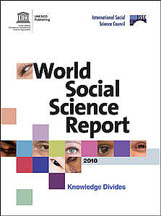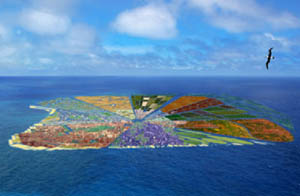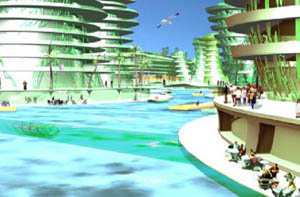

Welcome
to the ![]() Club
of Amsterdam Journal.
Club
of Amsterdam Journal.
The term 'hacking'
to most people refers to either Russian criminals stealing your creditcard
or Chinese spies breaking into NATO. For those who call themselves hackers
'hacking' means the creative use of technology to do new and unexpected
things. Thank old-media for this confusion.
In our hight-tech society of 2010 the realities of internet crime, electronic
warfare and using technology creatively are both much more mundane and
sometimes much more spectacular than portrayed in movies such as 'The
Net'. Windows is still crap but people keep buying it while alternatives
exist.
Meanwhile Wikileaks manages to run circles around the mightiest military
in the history of the planet but despite this the wars still go on.
Hacking changes a lot, but not always were we expect it.
What used to be the Star-trek communicator is called a smartphone now
so the future of hacking might just be a lot more interesting than any
old '90's science-fiction.
Join our event about
![]() the future of Hacking,
October 14th, 18:30-21:15!
the future of Hacking,
October 14th, 18:30-21:15!
Felix Bopp, editor-in-chief
| . Cybercrime or the end of scarcity? The future of hacking. | ||
|
|
by Arjen Kamphuis, Co-founder, CTO, Gendo Arjen is the moderator of |
|
|
The term hacking (and hacker) means very different things to different people. Most will associate the term with computer-enabled crime; from Russian mobsters stealing western credit cards to spammers sending billions of unwanted email advertisements for Viagra to Chinese intelligence employees attempting to break into NATO computers. For those calling themselves hacker (or being called hackers by their peers) hacking just refers to the creative use of technology, any technology, to do new and unexpected things. These two very different meaning of the term continue to cause a lot of confusion in any discussion about it. This piece will expand on both the cybercrime and creative technology uses and see where they meet. The term cybercrime
itself suggests that computer and the networks that connect them
are a new phenomenon in the eyes of law-enforcement and the justice
ministry. If a crime is enabled by a telephone or car this is not
worthy or separate classification. But if a computer or the Internet
is involved a crime quickly becomes a 'cybercrime'. A recent BBC
item [http://news.bbc.co.uk/2/hi/business/7544083.stm]
mentions a big case were 45 million credit cards were stolen. The
financial impact of this theft was either not known or not made
public. The trouble with evaluating 'cyber'-crime is both the scope
of the subject and the lack of hard data. From copyright infringement
via credit card fraud to child pornography (more accurately imagery
of child-abuse) cybercrime is a field that encompasses a wide range
of activities of varying seriousness and with very different levels
of impact on the victims. Even more The much happier side of hacking is all the wonderful things people are doing with technology all over the world, taking it apart and making it do stuff the original designers and producers never imagined. Thanks to intrepid hackers computers have become utterly commoditized and all of us can get connected to the global Internet for 10 euros per month. This democratization of technology has spawned not only entire new industries but also new ways for people to communicate, organize and participate in global affairs whoever en wherever you are. Martijn Aslander (Life hacker) will talk with us about using all these tools to get more out of life. Before computers became small and cheap people calling themselves hackers were tinkering with all kinds of other hardware. Now computers, sensors and other components have become so cheap hardware hacking is becoming just as democratized as merely using a computer. Alper Çugun will give us an overview of the possibilities and perils of the digital world meeting the real world again. The first desktop factories, also known as 3D printers, for home use with use-at-home pricing are a reality today and over the next decade they will develop in the same way our commodore 64 developed into smart-phones and laptops. Cheaper and twice as powerful every 18 months. If we can all print our consumer goods at home, will anyone even want to steal anything? Of course someone will figure out a way to print an AK-47 (just for fun mind you!) and then things will get really interesting. Everyone having acces
to technology has both benefits and problems; from youtube and wikileaks
as new global media to road-side bombs detonated by cheap mobile
phones and surveillance possibilities the Stasi could only dream
of. In a world re-defined by technology everybody needs to become
a little bit techno-literate. Ignorance of new possibilities will
mean losing out on great opportunities for a better life and becoming
a victim of those who would use the new tools for criminal or other
bad |
||
| .Next Event | ||
|
||
| .Designer of the Future 2010 | ||
|
||
| .Visit to CERN | ||
|
||
| .Club of Amsterdam blog | ||
|
|
||
| .News about the Future | ||
|
|
|
|
|
|
The bioWAVE and bioSTREAM
are designed to supply utility-scale grid-connected renewable energy
using efficient modular systems. These automated systems will be
mounted on the seabed and operate beneath the ocean surface, out
of view, and in harmony with the marine inhabitants that inspired
their design.
|
|
| .Recommended Book | ||
|
|
||
|
|
||
| .Recycled Island | ||
|
The proposal has three main aims:
The main characteristics of the island are summarized:
|
||
| .World Social Science Report, 2010 | ||
 Social Sciences: 2010 World Report observes growth in emerging countries The social sciences, which were dominated by western universities for a long time, are gaining ground in Asia and in Latin America, according to a report by the International Social Sciences Council (ISSC), published jointly with UNESCO. Entitled “Knowledge Divides”, it is a worldwide status report about these disciplines. According to the study, North America and Europe still publish 75% of social science journals worldwide, with 85% of them partially or totally in English. A quarter of them are published in the United States. The disciplines that are the subject of greatest number of publications in the world are economics and psychology. Two-thirds of social science journals in the world are published in the United States, the United Kingdom, the Netherlands and Germany. The UNESCO and ISSC report highlights contrasting developments in the different regions of the world. Social sciences are developing in countries such as China, India and Brazil. Thus, in Brazil, the number of social science researchers has practically tripled in the last ten years. In China, the Social and Human Sciences budget has increased by 15 to 20% a year since 2003. Despite this imbalance, the authors observe that the strongest growth in the number of articles published is in Latin America and Europe. On the other hand, the Russian Federation and Commonwealth of Independent States have seen a sharp drop since the disappearance of the Soviet Union, due to the falling number of researchers and their ageing, while Russian universities struggle to attract new talent. In Sub-Saharan Africa, three quarters of publications in the field of social sciences are from a few universities that are mainly located in three countries; South Africa, Kenya and Nigeria. This situation can be partly explained by the brain drain, even if Africa is far from being the only region concerned. The authors thus note that one doctor of economics in three working in the United States and nearly one doctor of social sciences in five was born abroad. “As this report illustrates, social scientific knowledge is often least developed in those parts of the world where it is most keenly needed,” said UNESCO Director-General Irina Bokova, in her foreword to the text. “Social scientific endeavour is also poorer for its bias towards English and English-speaking, developed countries. This is a missed opportunity to explore perspectives and paradigms that are embedded in other cultural and linguistic traditions.” The authors observe that the world needs the social sciences more than ever, in order to confront the major challenges facing humanity, such as poverty, epidemics and climate change. Social sciences do not respond to these challenges as much as they should, mainly due to disparities in the research capacities of different countries. Several hundred social science specialists from all over the world have contributed their expertise to this report. Gudmund Hernes, President of the ISSC, François Héran, Director of Research of the French National Institute for Demographic Studies (INED), Adebayo Olukoshi, Director of the United Nations African Institute for Economic Development and Planning (UNIDEP), and Hebe Vessuri, Director of the Venezuelan Institute for Scientific Research (IVIC) are among the experts who presented the Report during its launch at UNESCO’s Paris headquarters today. “The social sciences have become truly global: they are taught almost everywhere. Their research results are widely disseminated,” stated Gudmund Hernes, President of the ISSC. However, he noted that
they have been often criticized for their inability to foresee major
events such as the fall of the Berlin Wall in 1989 or the 2007 financial
crisis. But for him, “to face actual and future challenges
and effectively address global and local problems, more and better
social science is vital – i.e. understanding how the world
works from the ways humans interact.” Looking beyond the progress
and deficiencies noted in the report, Irina Bokova stated that “the
report reaffirms UNESCO’s commitment to the social sciences,
and our desire to set a new global agenda to promote them as an
invaluable tool for the advancement of the internationally agreed
development goals.” |
||
| .Futurist Portrait: Patricia Aburdene | ||
|
||
| .Agenda | ||
|
|
||
|
Season Program 2010/2011 |
||
|
October 14,
2010 |
|
|
|
November 25,
2010 |
the
future of Happiness Location: Hogeschool van Amsterdam, Auditorium, Singelgrachtgebouw, Rhijnspoorplein 1, 1091 GC Amsterdam [corner Wibautstraat and Mauritskade] |
|
|
January 20,
2011 |
the future of Bankingutr | |
|
February 17,
2011 |
||
|
March 17, 2011 |
||
|
April 14, 2011 |
the
future of the Human Mind Location: Hogeschool van Amsterdam, Auditorium, Singelgrachtgebouw, Rhijnspoorplein 1, 1091 GC Amsterdam [corner Wibautstraat and Mauritskade] |
|
|
May 19, 2011 |
the future of Singularity | |
|
June 23, 2011 |
the
future of European Democracy Location: Hogeschool van Amsterdam, Auditorium, Singelgrachtgebouw, Rhijnspoorplein 1, 1091 GC Amsterdam [corner Wibautstraat and Mauritskade] |
|
|
||
| .Contact | ||
|
||
| .Subscribe & Unsubscribe | ||
|
||
| m | ||
Copyright © 2002-2010, Club of Amsterdam. All rights reserved.















